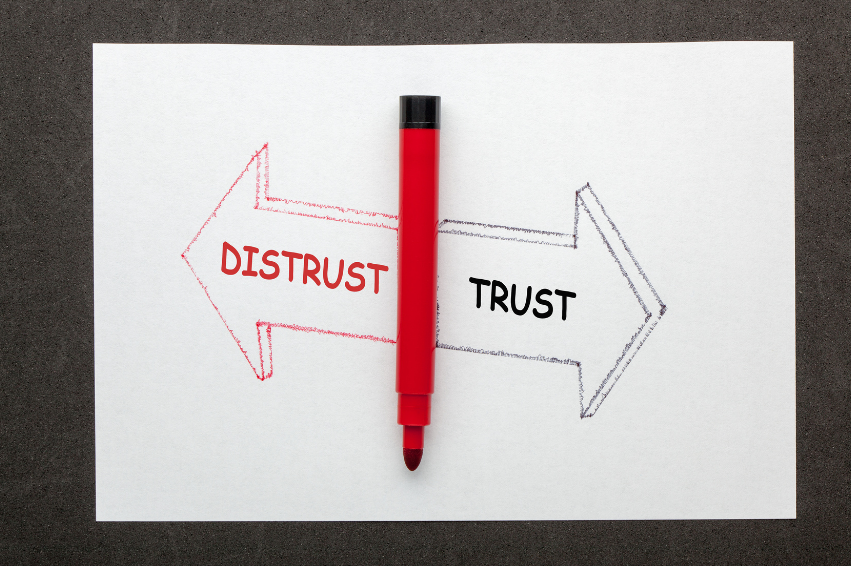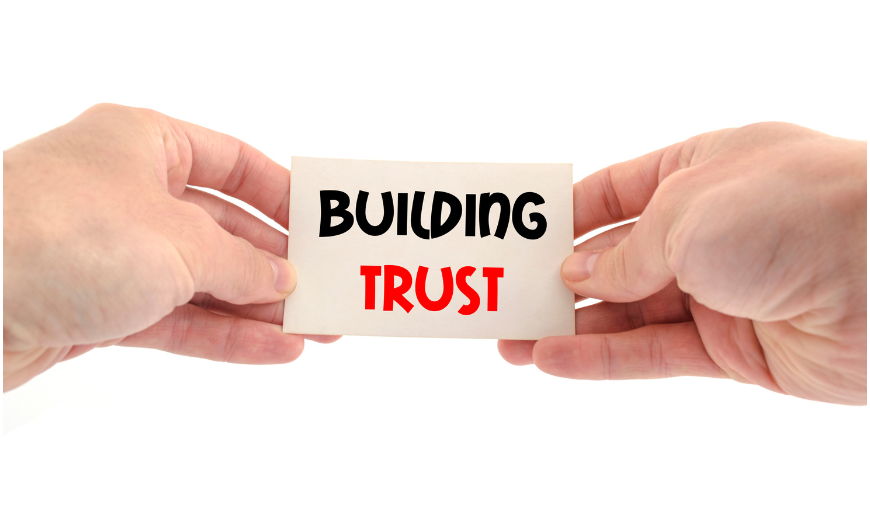TRUST CAN EITHER TAX YOUR ORGANISATION OR CREATE A DIVIDEND
This is the third in the four-part series on Trust.
There are a host of reasons why Trust does not exist within an organisation or is difficult to build. In the end they all come down to how people interact with each other, their behaviour, attitudes, actions, and the processes that support the people and the work they do.
What causes Trust to deteriorate?
Once Trust has been built it can be eroded. The erosion of Trust is the result of expectations and commitments not being met.
When founder(s)/leaders focus predominately on revenues and the bottom line at the expense of the people within the organisation, Trust is eroded.
Often with a focus solely on revenues, honesty, transparency and being candid are paid lip service, thus hindering required performance from being achieved, and reducing effectiveness.
Other activities that can deplete Trust, and ultimately the performance of the organisation, include and are not limited to:
- Lack of or communication or failing to communicate.
- Avoiding conflict.
- Breaking promises.
- Focusing on compliance.
- Assuming trust is automatic.
- Processes that are not transparent.
- Systems that do not support the flow of information.
The Organisational Impact of a Lack of Trust
If Trust does not exist or is being eroded there are clear organisational impacts.
One of the first things to be damaged by a lack of Trust is innovation.
For organisations to remain relevant and to grow and succeed, there needs to be a focus on continuous development and improvement. Innovation is a result of adopting a continuous improvement approach and innovation is sparked by Trust.
When Trust has been depleted or does not exist, innovation is thwarted. For innovation to flourish, people must be willing to collaborate, take risks, share information freely and be willing to fail without consequences to name a few conditions. None of these conditions are usually present in a climate that lacks trust.
By extension, a lack of innovation can cause an organisation to lose its agility, stagnate and lose revenue and market share.
Of course there are other impacts to the organisation. They include, and are not limited to:
- Low employee morale – increased employee turnover and an inability to attract the best.
- Reduced client loyalty – Client perception of the organisation is negatively impacted.
- Lower productivity and a lack of desire to work as a team across all levels of the organisation.
- A competitive market position may not be maintained.
- Decrease in revenue and profits.
- Communications are unclear, may lack honesty, and are not transparent.
Recognising these ominous impacts on an organisation when Trust does not exist or is low, surely all founder(s)/leaders would ensure that building and maintaining high levels of Trust is a priority for their organisation?
Common Barriers to Building Trust in an Organisation
This is a list of the most common barriers to building Trust in an organisation.
- Lack of communication.
- Negative communication.
- Inconsistent communication and/or messaging.
- Lack of clarity on individual and collective responsibilities.
- Failing to trust others.
- Transactional interactions rather than building personal relationship.
- No clearly articulated strategy/Changing the direction of the organisation frequently.
- Failure to have or understand a shared purpose, values, and vision.
- Broken processes and systems or a failure to build them.
Have you experienced any of these or seen or encountered them in the past?
What was the level of Trust like in those organisations if you have?
In the final article of the series, we will explore How to Build, Measure, and Maintain Trust in an Organisation.




